
Questions & Answers
This section is intended intended to provide simple answers to some of the most commonly asked questions about chiropractic.
What is chiropractic? Isn’t it nonsense, voodoo, or parlor tricks?
Chiropractic is primarily the science of detecting where joints are misaligned and nerve pressure exists and then repositioning the joints by hand. While this is the essence of chiropractic, there are many treatment types and philosophies within the profession.
A chiropractor’s education is equal to or greater than a medical doctors’ in all respects with the exceptions of pharmaceuticals, surgery and adjusting. Chiropractors study drug and surgery basics because this is important to being able to effectively manage patients; however we do not study how to prescribe or how to operate, nor are we required to do a residency after our internship.
Chiropractors are the only doctors who study adjusting, and we also have more hours of x-ray study than MDs or radiologists. In all other subjects we have equivalent classroom hours of education, and we use medical textbooks for our pathology, virology, parasitology, microbiology, anatomy, physiology and biochemistry classes. The science we use to explain and justify chiropractic is, today, the science and research of the medical profession.
Chiropractic’s reputation suffers from many things: a hundred-year assault from the medical profession which spread misinformation; the lasting professional insecurity of many chiropractors as a result of this assault; lack of similarity from one doctor to the next and a different Scope of Practice in each of the 50 states; misinformation about the risks and injuries associated with chiropractic; and the greed and lack of integrity of a few in our profession who have perpetuated a bad reputation.
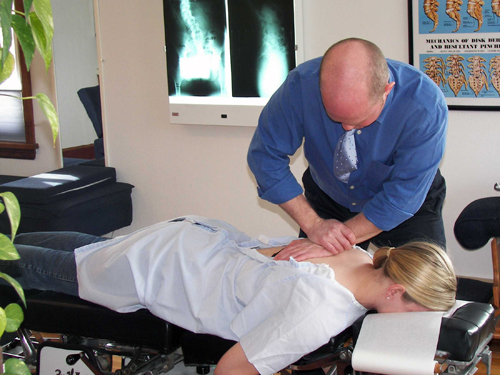
Another reality that impacts our reputation is the comparatively small body of research on chiropractic. Research is funded primarily by the pharmaceutical industry and medical equipment manufacturers, and obviously there is no benefit for them in showing the effectiveness of a $30 adjustment which eliminates or delays the need for drugs and surgery.
There has been much research done on chiropractic in England, Australia and Canada where the health care system is public and so are the health records, which makes it easier for studies to be conducted. Without exception these studies show that chiropractic is safer, more effective and would save billions of dollars annually if integrated (summaries of these studies are posted in About Chiropractic).
We are seeing this integration happen, though slowly, in America now; many of the 16 chiropractic colleges and universities have integrated care programs in place that allow our interns to work at local hospitals, seeing and treating patients there and working hand in hand with MDs and physical therapists.
Chiropractic is paid for by most insurance plans, including Medicare, and chiropractors are on staff at many VA hospitals. The day will come when chiropractic is properly understood and the survival instincts of the medical establishment give way to the ideal of the fastest, most effective care for all. In the meantime, experience chiropractic for yourself and make up your own mind.
Will it hurt?
There is a possibility that you will experience some pain or discomfort at the moment of the adjustment; but this is uncommon and the relief you experience afterward will last much, much longer than any pinches during the adjustment.
In some cases, a joint has been out of place for a long time, and that joint is either “dried out” or over-filled with the fluids from swelling. In either case, a slightly more focused and intense adjustment may be necessary to realign the joint and allow the healing process to begin.
Please know that in every case, my focus is on providing the most effective and comfortable experience for you and working with your body rather than forcing it. I also listen carefully to your feedback—but your recovery and health are ultimately a greater priority than comfort at that moment of the adjustment.
What are you really doing to me when you adjust me?
It is challenging to answer this question without getting a little technical. When a bone in your spine (or your wrist or ankle) slips out of place, it squeezes all the body parts between it and the bone next to it. We call this a subluxation. The most important things between the bones are nerves.
Arguably the nerves in your spine are more important than the ones in your wrist because the ones in your spine dive inside your body and feed all your organs and large regions, wheras the ones in your wrist feed smaller areas and no organs. Of course if you’re the person with carpal tunnel you don’t care about this detail and just want your wrist fixed…
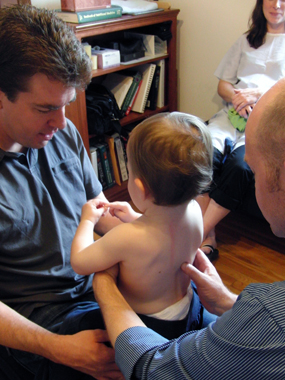
These spinal nerves start in your brain and eventually branch out to connect your entire body—they are incredibly important because they are the communication system for every part of you. If one of these nerves is being pinched by a misplaced bone or swelling, that means that your heart for example can’t get the messages from your brain, messages like “We’re exercising, and need more oxygen in the muscles, so beat faster!”
It also means that your body parts can’t communicate to your brain, messages from your running feet like “Hey, we really need more calcium down here if we’re going to keep exercising!” There are roughly 100 trillion cells in your body, and each one communicates with your brain over 200 times each second—a lot of important information to risk losing.
So when I adjust you, I use my hand to put that bone exactly back where it is supposed to be with a fast, shallow, specific push called an adjustment. A series of these adjustments over a few weeks keeps the bone in place long enough to allow the things that hold the bone in place (ligaments) to heal so they can hold the bone in its proper place. This ends the nerve pressure so that your body can heal itself while avoiding any disease that might be caused by this pressure. One of the most awesome things about this process is using the body's innate ability to keep you healthy. You are the doctor!
In my office we do a few additional things, like retraining weak muscles or trying to remove the swelling that comes with a subluxation. In these cases, we are working to speed the healing process—these are all things your body would do in time on its own, we are just trying to speed up the process.
There is more detailed and technical information available on the Medical Professionals page if you are interested.
Do I have to keep coming forever? My friend went to see a chiropractor and her appointments went on forever!
I cannot say, of course, why your friend had to go to the doctor so much. Chiropractic is like any other profession—some doctors are better than others, and help get people well faster. I’m sure a few have people come in more often than necessary for financial gain. Sometimes, the person does need to be treated that often, but the doctor has done a lousy job of explaining why, for instance, if the person has another condition like diabetes which causes the body to take longer to heal.
Chiropractic has a reputation for requiring many treatments. However, if you compare this to other health processes, you will realize that what may seem like a lot is not a lot at all. Compare it to your teenager with braces, for instance: those braces are meant to change the structure and position of teeth in your mouth, and to alter the surrounding structures, just like chiropractic—and braces are on there working 24 hours a day, 7 days a week, sometimes for years! What about going to physical therapy, or the gym? Do you expect to go to the gym once and walk out looking like Batman?
Or think about pharmaceuticals, which also are working in your body 24 hours a day, and which you take several times a day. By comparison you are seeing your doctor of chiropractic a lot less. Even a course of antibiotics often involves 30 “treatments” over 10 days. We are trying to relocate your bones and then get all the structures that hold them in place to change and heal, too. So in the beginning, you might be coming in several times a week for a week or two, and once your body starts to heal, you will need to come in less and less.
I just hope that you choose to come in once and awhile for a check-up (yes, just like the dentist) so that you won’t get back to that place of pain! There is a growing body of research that shows that people who get regularly adjusted are healthier and spend less overall on their health care than people who don’t.
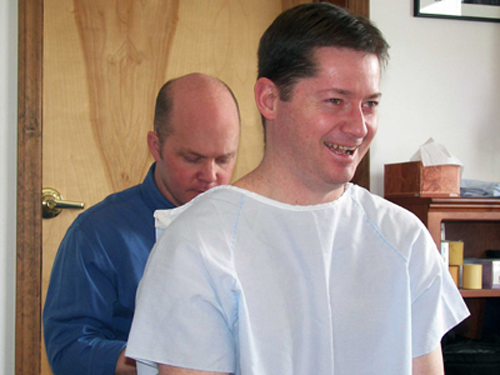
You do not have to come forever. Some patients care more about their health than others, and choose to come in once a month or every other month to get a check up, to keep their body well so they don’t end up in awful pain at some point. Others will choose not to do this, and so when they do get injured it will probably take them longer to get well again.
What is that cracking sound?
That sound is called a cavitation, and the funny thing is it’s the exact same sound you hear when you open a can of soda. There are tiny bubbles of gas in your joint capsules, and the crack you hear is the sound of those bubbles being forced together and then released, just like when you pop open a pop!
My “real” doctor says that chiropractic is dangerous. What kinds of risks are there?
There are risks with anything you do in life; driving to the grocery store, playing a sport, or carrying your grandchild on your hip. The truth is that chiropractic is one of the safest and most effective forms of health care. There is much research to support this statement, any of which can be requested in our office, and some of which is at the bottom of our research page.
While there are minor risks of discomfort or injury with chiropractic, Dr. Matthew takes your care and safety as his number one priority. He is constantly educating himself to better understand his craft and to be a better caregiver.
The most interesting information to offer about how safe chiropractic is is this: the average chiropractor’s malpractice insurance is about $4,000 a year, whereas the average medical doctor’s malpractice insurance is about $90,000 a year. If the dangers were significant with chiropractic, you can bet the insurance industry would be making a lot more from us, and we’d be sued much more often (also leading to higher insurance rates). The sad fact is that medicine is the number three killer in our country, as reported by the New England Journal of Medicine.
This number, of course, reflects misdiagnosis, accidents in surgery, giving the wrong medication or an incorrect dose: a lot of different factors are included—but it still dangerous business. By comparison, you will not find a more effective, safe and powerful treatment than chiropractic: all we do is support your body in doing its own healing, and I guarantee you that your body is the best doctor and pharmacist for you in the world.
Why would my other doctors say it’s dangerous if it isn’t?
The simplest and most obvious answer to this is that most medical doctors have no exposure to, or experience with, chiropractors or with any of the research on chiropractic: most of them have learned about it the same way you probably have, through word of mouth, rumor and inaccurate reporting.
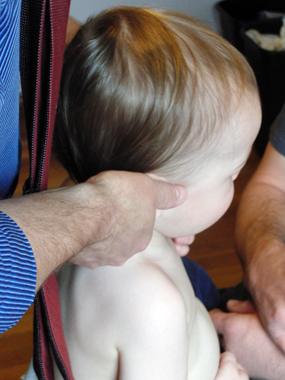
Up until the late 1980s (and beyond), there was a focused effort on the part of the AMA (the American Medical Association) to attack and discredit chiropractors, as we were seen as competition for patients’ business. After all, who would choose to have an $30,000 surgery when a series of $30 adjustments might work? Part of this attack by the AMA’s “Committee on Quackery” was to teach medical students that there was no basis for our work and that chiropractors were a danger to the public; so there are generations of MDs who were misled by their profession. In 1987 a Federal judge found the AMA guilty of antitrust practices with regard to chiropractic and ordered them to stop their focused attack (Wilks vs. AMA). Since then there has been less (or no) misinformation given to medical students about chiropractic; however now instead of being misinformed, they are now not taught anything about us, including what we do, how safe chiropractic is, or when to refer people to us.
The truth is that MDs have as little access to research, information or understanding as most of the general public does, so it is no surprise that unless your medical doctor is a chiropractic patient themselves (and many are), they have no idea about what we do! There are summaries about the statistical safety of chiropractic on our About Chiropractic page.
What about strokes? I have seen shows on chiropractic and strokes.
There has been a false connection created between strokes and chiropractic. Statistically there is a greater chance of having a stroke in the shampoo chair at the hair salon than there is of having a stroke at the chiropractor’s office, especially if your doctor of chiropractic minimizes rotation in the neck during adjustments, which Dr. Matthew and all other Gonstead chiropractors do.
The most critical studies run by “anti-chiropractic” researchers show the chances as less than 1 in 1 million adjustments, and when all the studies on this topic are averagerd, the risk comes out to about 1 in 5 million. Again, the way you are adjusted in our office also decreases the risk, and remember that the average chiropractor’s malpractice insurance is about $4,000 a year, whereas the average medical doctor’s malpractice insurance is about $90,000 a year. That fact by itself should tell you something about the safety of an adjustment.
A long-term study released in 2010 found that there is actually a greater chance of having a stroke after visiting an MDs office than a DCs office. The authors came to believe that both false associations (after all, no one would suggest going to your MD would cause a stroke) occur because the symptoms people often have during a stroke, like neck pain and headaches, are what drive people to a doctor in the first place. Any connection between strokes and a doctor's office visit are likely because a stroke was already in progress, not because the DC (or MD) caused one.
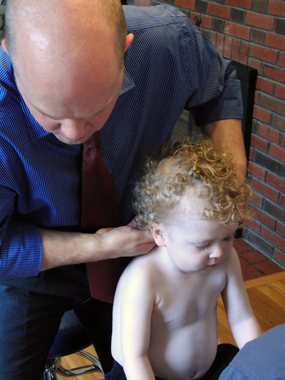
Be aware that some things do increase your risk, like smoking and birth control pills. It is essential that you let any and all of your doctors know about behaviors like these.
How do I know when I’m getting better?
Hopefully you come in for Wellness care, and were not in pain to start with! In the event that you came in due to pain, one sign that you’re getting better is that the pain will decrease: it will be less intense, less frequent, and you will be able to do more, longer, without having the pain return. I’ll also keep you up to date on your progress, like any doctor should.
One of the biggest challenges to complete healing is that as a culture we tend to base everything on symptoms—in other words, “If there is no pain, I must be healthy.” The truth is that just as with a weakened radiator hose before it has blown or a frayed electrical wire in the wall that hasn’t burned your house down yet, just because you’re not in terrible pain does not mean there is not a problem. Just because you have no symptoms doesn’t mean you are well. With all health conditions there is a symptom-free period where disease is still progressing. It is very, very important to complete your treatment plan, no matter the doctor, his or her specialty, or the treatment.
Who is chiropractic for? Is my daughter too young, and why would she need it anyway? What about my grandmother?
Chiropractic is safe for everyone, and like any other health care modality, there are accomodations made for people in different age ranges. It would not make sense to adjust an 80-year-old retiree the same way as a 24-year-old truck driver or a 2-year-old. The techniques chiropractors use are as specific and adapted to you as any surgery, drug, or physical therapy would be, and arguably much more so. In fact, two of the most popular diplomate programs in chiropractic (special 3 to 4 year specialty programs we do after med school) are pediatric programs, aimed at mastering the work possible with pregnant women, newborns, and kids up to 18 years old.
The reason a child might benefit from chiropractic is that our first trauma in life comes during the birthing process, whether it’s a natural birth or one involving vacuums, forceps or a caeserian procedure. The sooner these traumas can be addressed, the better. There has been substantial research done on asthma and chiropractic with very positive results. Your grandmother might be interested because one of the major causes of osteoarthritis is long-term joint misalignment, which will grind down the disks and cartilage faster if the joint is misaligned and she keeps trying to use it normally.
What is Gonstead Chiropractic?
Please read about Gonstead on the About Chiropractic page. There are other good resources on the web.
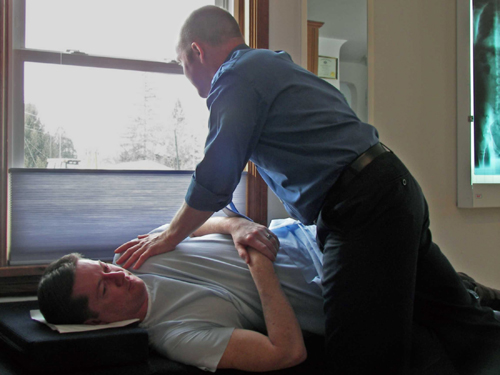
What is Spiritual Psychology?
Spiritual psychology is a way of approaching life and healing that is based on the premise that we are all spiritual beings having a human experience, and insists that we each have all the internal resources we need to effectively handle any situation that confronts us.
Spiritual psychology is taught at the University of Santa Monica. It is a once-monthly weekend program that people fly from around the world to attend. In the first year of the program, students are introduced to a host of communication, life mastery and excellence tools which are practiced in a practical context during the school weekend. In the second year, a series of rigorous and exciting projects are undertaken which require implementation and integration of these skills.
Dr. Matthew attended this program for his own health and success, and yet there is a tremendous benefit to you as a patient. This program allowed Dr. Matthew to practice and master a powerful way of being with people, of listening, and of communicating which benefits every interaction he has and will surely help to support and speed your recovery. For more information on USM, please ask Dr. Matthew about his experience, or visit www.gousm.edu.
Drs. Ron and Mary Hulnick, the founders and Presidents of USM, recently released a ground-breaking book on the principles taught at USM, Loyalty To Your Soul: The Heart of Spiritual Psychology.
Copyright 2005-2017 Centre Chiropractic, PC
Get our free newsletter, Centred on Health
![]() We'll never sell or share your information
We'll never sell or share your information
